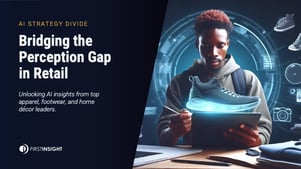This is the time of year when retailers and brands typically see a flurry of firings and hirings of CEOs and other top execs. It’s a mid-summer tradition of sorts, coming after bonuses have been calculated and paid, and during the relative quiet between seasons.
This year’s executive shuffle has been extra busy as CEOs of struggling public companies run out of excuses, and the wolves of Wall Street — especially private equity investors who have been speculating in the sector lately — run out of patience. After two and a-half years of toughing out the pandemic, supply chain snarls, the Great Resignation, and rising inflation, several major retailers have been cleaning house, swapping out CEOs and other c-suite execs.
The “CEO Exodus,” as it has been dubbed, includes the recent departures of the heads of Bed Bath & Beyond, Dollar General, fashion reseller TheRealReal, Amazon Worldwide (its retail arm), The Gap and Home Depot. To be fair, some of these had been planned but delayed by economic turmoil. And some of the companies like Home Depot have been big beneficiaries of spending shifts in the economy.
The CEO shuffle in the retail industry has been exacerbated by the disruptive effects of ecommerce, a trend that was well underway before the pandemic. A Conference Board report published in 2018 found that nearly one in four S&P 500 retailers had announced CEO changes in 2017, more than double the industry’s historical average rate of 10.5%.
Across all industries, CEO turnover is the highest in 20 years of tracking, according to executive coaching consultancy Challenger, Gray & Christmas. And the pace is set to continue as the economy stalls and odds favor a fresh wave of bankruptcies, buyouts, and reorganizations, along with the inevitable flurry of pink slips.
Why does all this matter?
Rising turnover has in turn dragged the average tenure of CEOs among companies that make up the S&P 500 Industrial Index down to about 4.9 years from about six years in 2017. The average CEO tenure on the broader S&P 500 Index is currently about seven years.
But the world’s best-performing CEOs hold their jobs for an average of 15 years, according to a 2019 Harvard Business Review report.
A study of about 750 S&P 500 leaders by Spencer Stuart, a leadership advisory and executive recruiting firm, showed that CEOs turned in their best value-creating periods between 11 to 15 years on the job.
The rise in speculative investments in retail brands introduces pressure on CEOs to perform unrealistic turnarounds and miracles. It is myopic and counter-intuitive to let a bunch of short-term speculators decide who will run companies and, when the results don’t come fast enough, flip them every couple of years.
There’s one other culprit at work here, according to Burt Flickinger, managing director of Strategic Resource Group, a retail consultancy — executive recruiters who, “do really regrettable work,” he said in a recent podcast interview.
“Executive search principals have no operating experience and they're selecting the wrong people with the wrong skills for the boards and in many cases the wrong people with the wrong skills for retail leadership and operations.”
Flickinger faults C-suite executives for spending too little time in their own stores. “The people running the stores are suffering from lack of support, lack of resources, lack of attention,” he says. “The good CEO should be investing 40% to 60% of their time leading and motivating and getting feedback from the store leaders.”
It is a strategy of leading from the front line versus leading from the back office. Getting to know the customer, what they want and who they are and what they are experiencing. I watched this firsthand in a CNBC interview with Doug MacMillan the CEO of Walmart at the height of the pandemic from a store where he was leading from in front.
Walmart is a great example of leading from the front line while only having small number of CEOs with average tenure in the sweet spot. It seems they want to know their customer and build a sustainable business.
Perhaps others should follow that model and stop the shortsighted Silicon Valley chase to the quick payout.














